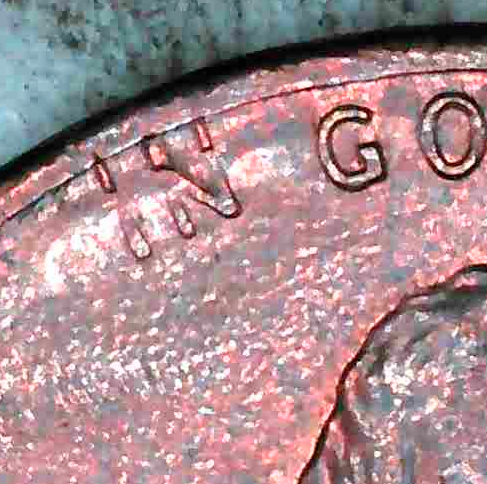Why Your Coin Looks Melted Into the Rim

The “IN” didn’t double. The metal shoved sideways into the rim when the die hit. Looks dramatic, but it’s just metal flow.
You’re staring at the rim of a penny and something looks off. The letters are smeared and stretched, almost like they melted into the edge. It isn’t Photoshop. It isn’t a mintmark doubled by magic. It’s the metal itself, still soft and moving like taffy when the die struck.
This kind of distortion is called metal flow. The coin press hit hard, the planchet wasn’t perfectly balanced, and the copper got shoved around. Instead of filling the die cleanly, the metal squished into the rim. It leaves a warped look, sometimes dragging design details right along with it.
Collectors love to imagine this means jackpot. It doesn’t. Most of the time, this is nothing more than sloppy physics. A minting hiccup, not a prized error. Cool to look at, sure. Valuable? Almost never.
How the Metal Gets Pushed Around
A coin blank isn’t hard steel. It’s soft metal waiting to be smashed into shape. When the dies come down the pressure is brutal. Hundreds of tons force the planchet to spread out and fill every corner of the design.
Most of the time it works clean. The metal flows like clay into the die cavities, giving you sharp letters and rims. If the strike is off or the planchet is uneven, the excess metal has to go somewhere. It squirts sideways.
That’s what you’re seeing here. The copper didn’t stay neatly in the design. It shoved into the rim, dragging letters along with it. It looks like doubling, or melting, or even a rare mint blunder. In reality it’s just physics under too much pressure.
Why It’s Not Doubling or a Major Error
When collectors hear “letters look doubled,” they immediately think of a doubled die. That’s the famous kind of doubling where the design was cut into the die twice at slightly different angles. True doubled dies are rare, repeatable, and every coin from that die carries the same feature.
Metal flow isn’t that. It’s a one-off distortion caused by the strike itself. The die was fine, the design was fine, but the force of the press shoved the metal in a weird direction. The next coin off the press probably looked normal.
That’s the key difference. A doubled die creates a variety. Metal flow creates an oddball. Collectors chase varieties. They shrug at oddballs.
Why the Market Doesn’t Care
Coins like this hit the market all the time. They get hyped on eBay with titles like “RARE MINT ERROR”, but they almost never sell for real money. Why? Because they’re not rare, they’re not repeatable, and they don’t fit into the error categories collectors pay for.
Value in errors comes from things you can track: doubled dies, off-center strikes, wrong planchets. Those have catalogs and checklists. Metal flow doesn’t. It’s just a side effect of too much force on soft metal.
At best you’ll get a few bucks from someone who likes odd-looking coins. Most seasoned collectors will pay face value and move on. It’s interesting, but it’s not an investment.
Still Worth Holding Onto
Just because it won’t pay your rent doesn’t mean it’s worthless. Coins like this are teaching tools. They show how violent the minting process really is and how metal can behave under pressure. They also make a collection more interesting, especially if you’re building a box of oddities alongside the usual varieties.
So keep it. Label it. Use it to train your eye on what’s real doubling and what isn’t. It’s a cool piece of minting history to show friends or new collectors. Just don’t expect anyone to pay jackpot money for it.
